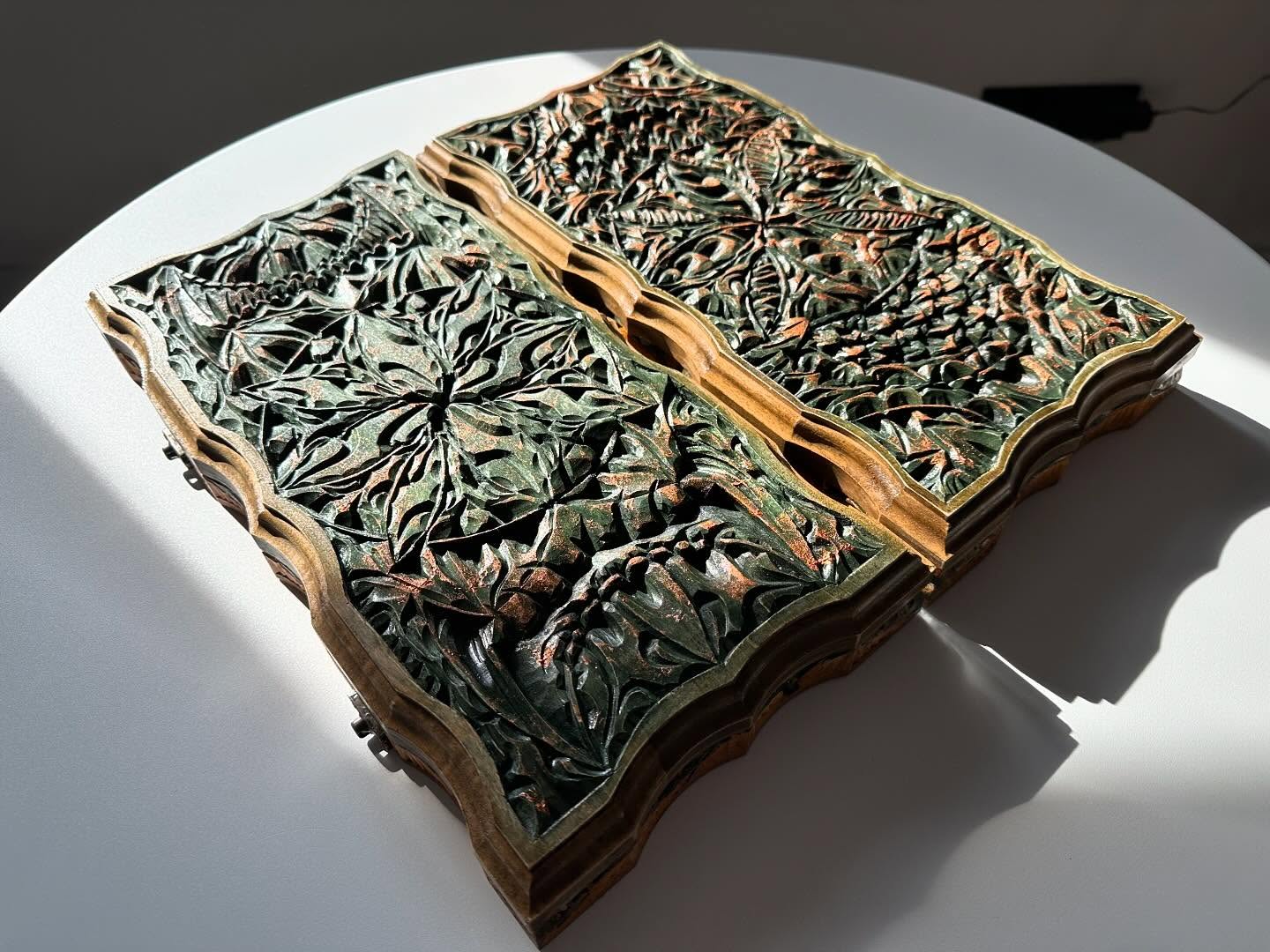Uniq Backgammon project.¶
The Creation of Backgammon: History and Stages of Production¶
Backgammon is one of the oldest board games that has retained its popularity to this day. The process of creating backgammon combines craftsmanship, traditions, and the influence of various cultures. Countries such as Montenegro, the Netherlands, and Poland played a significant role in the development and production of backgammon, each contributing unique techniques and styles. Stages of Creating Backgammon
1. Choosing the Material and Preparing the Board
The process begins with the careful selection of wood. In Montenegro, walnut and beech were traditionally used for their durability and ability to hold intricate carvings. In the Netherlands, oak was more common, while in Poland, linden wood was favored for creating detailed engravings. The wood was naturally dried to prevent warping.
2. Carving and Decorating
This stage required exceptional skill. In Montenegro, craftsmen preferred geometric patterns symbolizing strength and protection. Dutch artisans introduced marine motifs and baroque-style engravings. Meanwhile, Polish craftsmen focused on floral designs and folk patterns. Each carving was done by hand, making every board unique.
3. Inlay and Lacquering
After carving, the boards were inlaid with mother-of-pearl, copper, or brass. The Dutch were pioneers in using colored enamel and ivory inserts. To protect the wood, the boards were coated with natural resin-based lacquer, which enhanced the patterns and preserved them for years.
4. Making the Checkers and Dice
The checkers were also made of wood, sometimes from stone or bone, and were decorated with patterns reflecting the style of the country where the set was made. Dice were crafted with special attention to balance and accuracy to ensure fair play.
5. Testing and Polishing
After completing the carving and inlay work, the board was tested to ensure that the checkers moved smoothly and evenly. Then, the board was polished with wax for additional shine and protection against moisture.
6. Packaging and Distribution
Finished backgammon sets were often provided with fabric or leather covers. Thanks to trade routes through the Balkans and the Baltic Sea, backgammon sets from Montenegro, the Netherlands, and Poland became known far beyond these countries.
The Influence of Different Countries on the Production Process
The international character of backgammon creation was evident in the diversity of styles and techniques. Montenegro contributed elements of strength and traditional motifs, the Netherlands added sophistication and inlay techniques, and Poland enriched the sets with folk ornaments and lightness. This synergy made backgammon not only a game but also a work of art, symbolizing the richness of European cultural traditions.
Technical Details¶
- Material: High-quality linden wood
- Dimensions: 36x18x8 cm
- Finish: Eco-friendly paints and protective varnish
- Technique: Hand-carved with traditional tools
- Design: Uniq custom design pattern
- Duration: Approximately 40 hours of handwork












